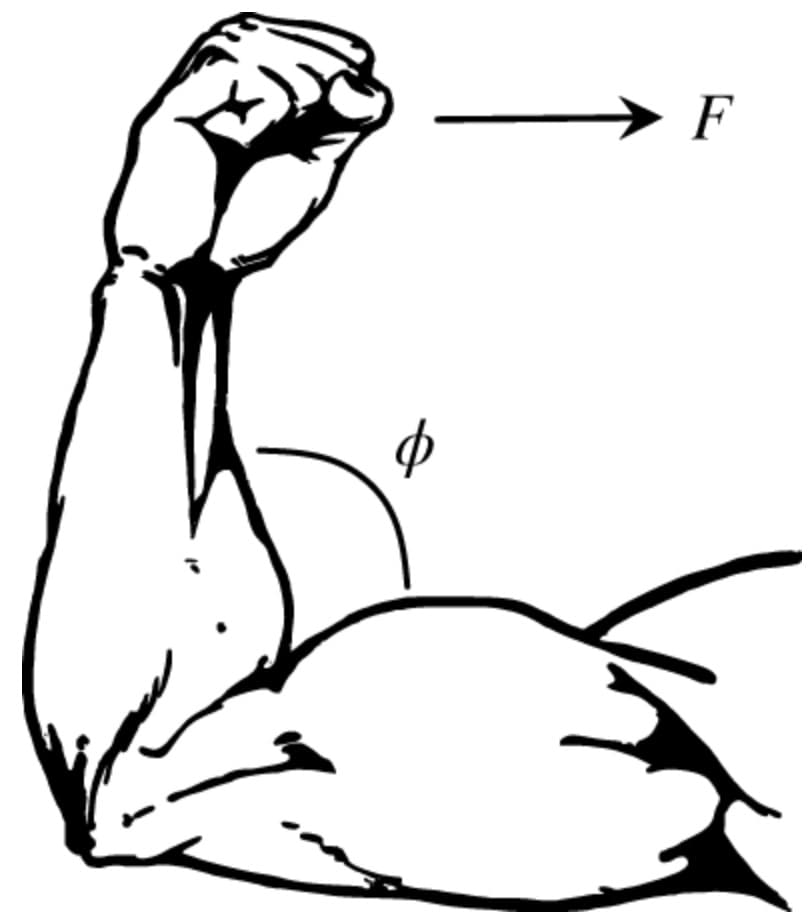A bicep muscle shown in Fig. P2.3 can apply a force F measured in Newtons (N) as a function of the elbow angle ϕ, measured in degrees as described by the quadratic equation F(ϕ) = 6ϕ − 0.04ϕ2. For a bicep force of F = 200 N, solve the equation for ϕ by each of the following methods: factoring, completing the square, and the quadratic formula. Using your solution from part (a), determine the elbow angle ϕ where the force exerted by the bicep is maximum. In addition, calculate the maximum force Fmax.
A bicep muscle shown in Fig. P2.3 can apply a force F measured in Newtons (N) as a function of the elbow angle ϕ, measured in degrees as described by the quadratic equation F(ϕ) = 6ϕ − 0.04ϕ2. For a bicep force of F = 200 N, solve the equation for ϕ by each of the following methods: factoring, completing the square, and the quadratic formula. Using your solution from part (a), determine the elbow angle ϕ where the force exerted by the bicep is maximum. In addition, calculate the maximum force Fmax.
Related questions
Question
A bicep muscle shown in Fig. P2.3 can apply a force F measured in Newtons (N) as a function of the elbow angle ϕ, measured in degrees as described by the quadratic equation F(ϕ) = 6ϕ − 0.04ϕ2.
- For a bicep force of F = 200 N, solve the equation for ϕ by each of the following methods: factoring, completing the square, and the quadratic formula.
- Using your solution from part (a), determine the elbow angle ϕ where the force exerted by the bicep is maximum. In addition, calculate the maximum force Fmax.
- Plot F versus ϕ and clearly indicate the maximum force on the graph. Also clearly label the x-intercepts on the graph.

Transcribed Image Text:Ф
> F
Expert Solution
This question has been solved!
Explore an expertly crafted, step-by-step solution for a thorough understanding of key concepts.
This is a popular solution!
Trending now
This is a popular solution!
Step by step
Solved in 5 steps with 2 images

Follow-up Questions
Read through expert solutions to related follow-up questions below.